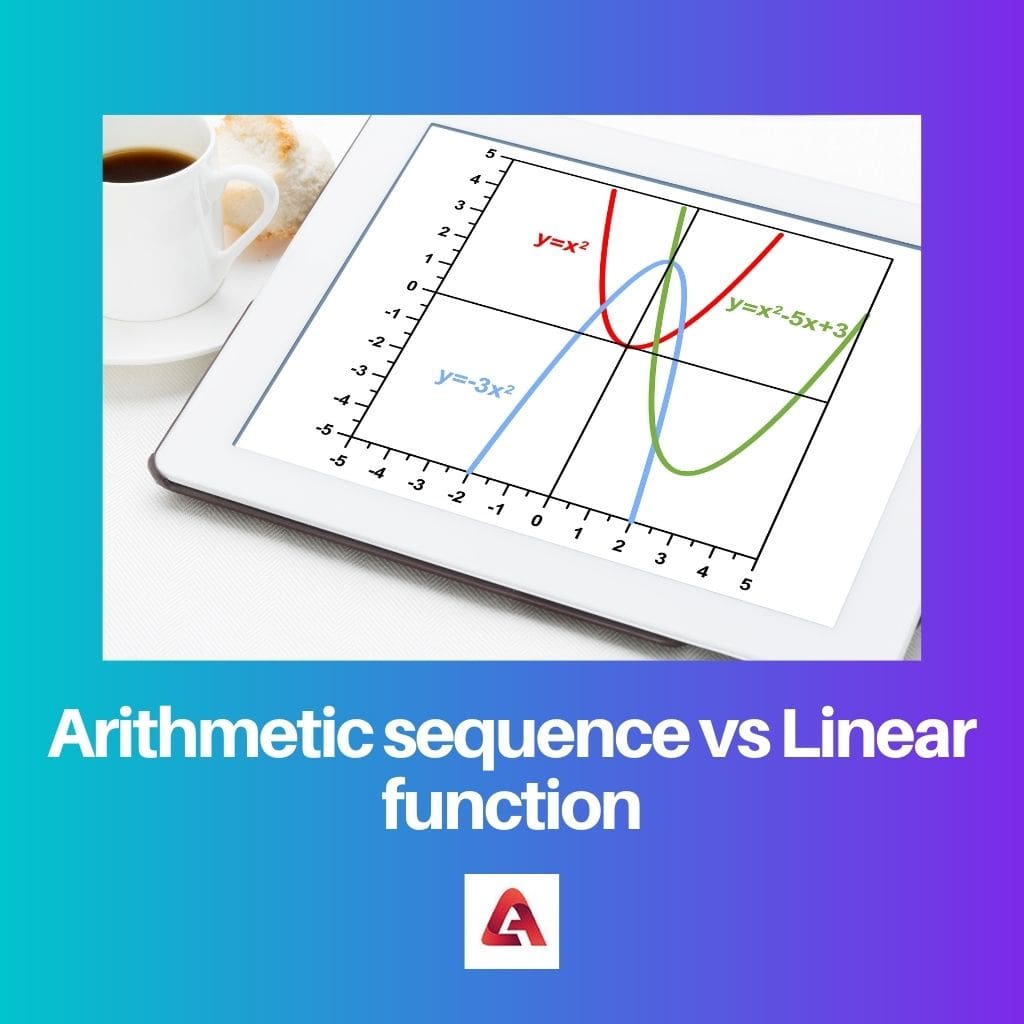Mathematics is not just a branch of study. It is a part of our life. The techniques of maths are applied in our everyday lives. Generally, the patterns of the occurrence OS are found, and then various generalizations are found.
Some of the real-time samples are also based on the progressions and series. An arithmetic progression is formed by adding the same value to the last number to obtain the following number.
Key Takeaways
- Structure: Arithmetic sequences are ordered sets of numbers with a constant difference between successive terms, while linear functions are mathematical expressions with a constant rate of change represented as y = mx + b.
- Discrete vs continuous: Arithmetic sequences consist of discrete values, while linear functions represent continuous values across a domain.
- Examples: Arithmetic sequences include {2, 5, 8, 11, …} with a common difference of 3; linear functions include f(x) = 3x + 2 or g(x) = -2x + 5.
Arithmetic Sequence vs Linear Function
The difference between an arithmetic sequence and a linear function is that an arithmetic sequence is a sequence of numbers increasing or decreasing with a constant difference. In contrast, a linear function is a polynomial function.

Comparison Table
| Parameters | Linear Algebra | Arithmetic sequence |
|---|---|---|
| Branch of Maths | It is used in Calculus and Linear Algebra. | It is used in general mathematical calculations, which are pretty simple. |
| Values | Here constant values are obtained. | The constant values can not be obtained. |
| Plotting of Graph | Only a straight line will be obtained. | Here the graph can be plotted on both positive and negative sides. |
| Application | To find the area of space. | To count the number of things. |
| Area | We will obtain a constant area when calculating the site using the plot. | When the area is calculated, the site differs from one to the other. |
What is Arithmetic Sequence?
An arithmetic sequence is otherwise called an arithmetic progression. An arithmetic sequence is a list of numbers that has a common difference between the numbers.
The constant difference between the two numbers is called a common difference. It is denoted by ‘d’. This expected difference travels along the sequence.
When the difference between consecutive terms is positive, the sequence increases. When the difference between the consecutive terms is, the negative line is said to be a decreasing sequence.
- The sequence members will reach positive infinity if the common difference is positive.
- The sequence members will reach negative infinity if the common difference is negative.

What is Linear Function?
The term Linear Function is now used in two areas of Mathematics. They are Calculus and Linear Algebra. In Calculus, the linear function will be a straight graph.
In the case of calculus or analytical geometry, the Linear Function is a polynomial whose degree is either one or even less than one. The polynomials that have zero degrees are also included.
In linear algebra, the linear function is used to obtain the area of a particular space. It is also used to establish a relationship between the two coordinates, giving rise to a third term.
Main Differences Between Arithmetic Sequence and Linear Function
- The slope in an arithmetic function can be obtained from the graph. But in a linear function, the slope can be found using the expression
- An arithmetic sequence is discrete, but a linear function is continuous.

This article is very informative. These concepts are very useful to understand the occurrences and patterns of real-life problems.
This article provides a complete comparison between arithmetic sequences and linear functions. It really gives useful and important details about these two that are important for students of mathematics.
Yes, excellent! It’ll be very beneficial for students. This will improve their understanding of mathematics.
This topic is very complex, and this article has done an excellent job in simplifying these complex concepts for a broad audience.
I think this article is very helpful for those who are trying to understand mathematics.
This article brings a clear and simple explanation about arithmetic sequences and linear functions. It has significantly helped to enhance my learning.
A very profound and insightful article, which will play a crucial role in the learning process of students.
The article gives a well-organized explanation and comparison. However, I believe more emphasis on practical applications could be included.
This article’s in-depth comparison of arithmetic sequences and linear functions will undoubtedly develop a better understanding of these concepts.
While this article presents a clear overview of arithmetic sequences and linear functions, it would be most valuable if it included more practical examples.
The article is engaging, and it aids in understanding the differences between arithmetic sequences and linear functions.